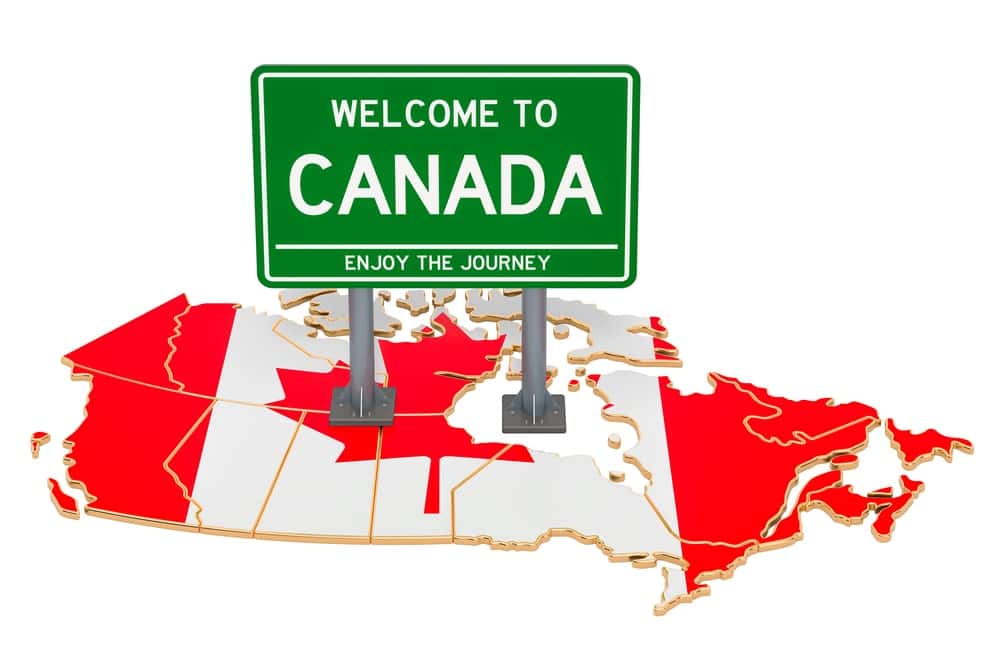
TR to PR Pathway Immigration Program for Canada
Part of the Canadian government’s current immigration strategy is to provide a faster pathway to permanent residence for temporary workers here.
A new program aims to build on the previous TR to PR Pathway program, which was announced in April 2021 and received more than 80,000 applications before closing in November 2021.
The TR to PR Pathway program allowed individuals working in essential occupations and international graduates working in any occupation, to apply for Canadian permanent residence.
However, a backlog of applications has meant that many foreign workers in Canada were left without an option to remain in the country permanently in the past 12 months or so.
The new immigration program, announced in September 2022, builds on the current program by focusing on creating new immigration options for international students and temporary foreign workers
Immigration, Refugee, Citizenship Canada (IRCC) has outlined five pillars to improve transitions from temporary residency to permanent residency and, in this post, we take a look at what this means for you if you’re looking to find a way for permanent residency here in British Columbia.
New program to help temporary residents become permanent residents
Canada is working on a program that will help temporary residents remain in Canada permanently, according to the immigration minister, Sean Fraser.
According to Fraser, the new plan, which is still being developed, expands on the previous TR to PR Pathway and addresses the following six key points:
- Giving more weight to Canadian work experience under economic immigration programs and expanding eligible occupational categories.
- Incorporating data on the labour market and skills shortages to base immigrant selection on persistent labour gaps.
- Examining information from other federal immigration programs.
- Encouraging immigrant retention in smaller communities and Francophone immigration outside Quebec.
- Identifying mechanisms to reach quicker changes in labour market needs and regional economic priorities.
- Specifically considering occupations and essential services such as health services, trades, transportation, caregivers, agriculture, and manufacturing.
Is TR to PR Pathway an Express Entry alternative?
Canada is facing a major labour shortage and the government is keen to provide more options for essential workers to remain in the country permanently.
Under the present system, Express Entry requires candidates to have work experience in skill types 0, A, or B. Candidates with work experience in skill types C or D have fewer opportunities for permanent residency.
However, it is anticipated that the new immigration program will provide permanent residency opportunities for a broader range of candidates working in Canada.
All-program Express Entry draws resumed in early July and recent comments from the immigration minister suggest that some requirements may be relaxed.
Eligibility for the TR to PR pathway
Candidates for the TR to PR pathway program must fall into one of the following categories:
- Temporary workers in the healthcare sector.
- Temporary workers in other essential occupations (which includes a wide variety of jobs).
- Recent graduates from a Canadian post-secondary institution.
Workers under the first two categories must have at least one year’s Canadian work experience before applying for permanent residency.
Graduates must have completed an eligible post-secondary course within the last four years (no earlier than January 2017).
Five pillars to improve the transition from TR to PR
The Canadian government’s plan to expand the ways for temporary foreign workers and international students to transition from temporary residents to permanent residents is based on the following five pillars:
Increased immigration levels
This is basically the same as the existing policy, which aims to meet increased immigration targets between 2022 and 2025 (which were recently updated from the old targets for 2022-2024).
The government aims to meet the following targets in its attempt to accommodate more permanent residents:
- 465,000 new Permanent Residents in 2023 (up from 447,055 in the previous plan).
- 485,000 new Permanent Residents in 2024 (up from 451,000 in the previous plan).
- 500,000 new Permanent Residents in 2025 (not included in the 2022-2024 plan).
Note that these figures include more than just Express Entry or economic class immigration.
Reform Express Entry and increase flexibility in immigration selection tools
The IRCC will carefully assess recent measures such as the TR to PR Pathway and apply the insights learned to other programs – leading to potential enhancements to the Express Entry program (as previously suggested above).
This should help qualified candidates with the desired attributes to ease their transition from temporary to permanent residents.
This pillar also considers amendments to the Immigration and Refugee Protection Act, which provided the IRCC with more flexibility to target candidates with specific attributes, such as specific educational credentials and work experience in Canada.
This second pillar also includes a review of the Comprehensive Ranking System used in Express Entry to increase the “weighting” for candidates with Canadian work experience/education, job offers and language ability.
There is also an undertaking to review the International Student Program to facilitate opportunities for more qualified students who want to become permanent residents in the future.
The provision of open work permits for family members of all foreign workers in Canada who have a work permit is also considered under the second pillar.
Enhance permanent economic immigration programs & pilots
The third pillar involves action on several different fronts:
- Adopting the most recent version of the National Occupational Classification (NOC) system, allowing the IRCC to expand eligibility to certain occupations.
- Improvements to the process for recognizing foreign qualifications.
- Enhancements to existing pilot programs (agri-food pilot and caregivers).
- Making it easier to facilitate the transition of physicians to permanent residents.
- Improving the transition of international students.
Creating a clearer pathway to permanent residence for international students is a priority for the IRCC. Ideas include allowing certain international students more time to stay in Canada to gain work experience (with a view to permanent residency). As such, a policy review of the International Student Program will be part of the overall process.
Support communities in attracting and retaining newcomers
This pillar aims to provide support to local communities in their attempts to attract and retain newcomers by using the existing regional immigration programs and any beneficial new programs — including through increased Francophone immigration.
Build operational capacity
In this pillar, the IRCC is focused on enabling the organization to process more applications in a timelier manner — for instance, by meeting the extra manpower requirements and upgrading the IT systems. There is a realization that both elements need to be addressed to accommodate changes to the Express Entry process proposed in other pillars.
If you need assistance with permanent residency or any other immigration issue, the consultants at Canadian Currents Immigration can help you during an initial consultation.

We serve ALL of Canada. Currently have offices Western Canada — Vancouver, Calgary, Edmonton, Kamloops and Red Deer. We also have the infrastructure to work with any of our clients virtually — even from the furthest regions of the Yukon to Newfoundland.
Call (778) 331-1164 [toll free 1 (844) 715-0940] to get routed to the best office for you or contact us online to schedule an appointment.
We also have a dedicated intake form to help you get the ball rolling. Our intake team will review your specific case and advise you on the next steps to take as well as what to expect moving forward.
Our offices are generally open 8:30 a.m.—4:30 p.m., Mon—Fri.


Alfonso Chen
IMMIGRATION LAWYER
Alfonso is a lawyer of our Vancouver office who provides services in both English and Mandarin. Prior to joining our firm, he worked at a full-service law firm for over four years, where he helped clients with a wide variety of family law matters, from drafting prenuptial agreements to negotiating terms for and drafting separation agreements to representing clients for divorces.


